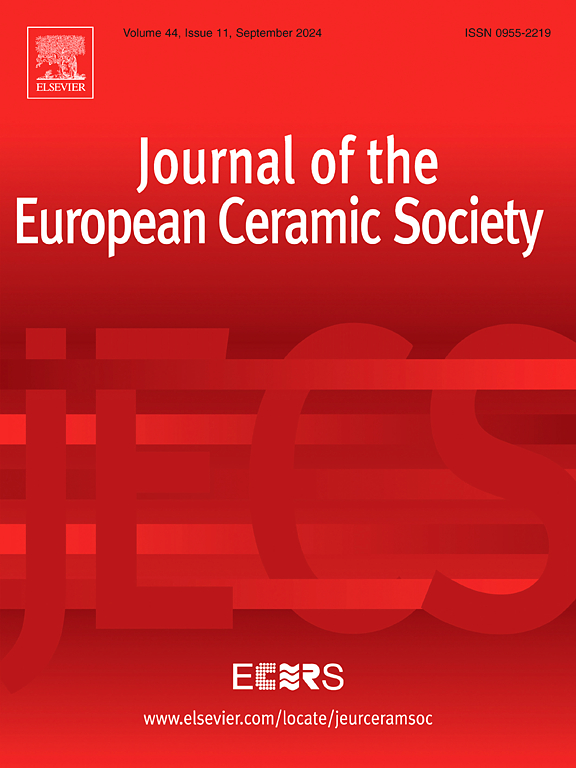Localization of embrittlement in CMAS-infiltrated thermal barrier coatings via laser shock experiments
IF 5.8
2区 材料科学
Q1 MATERIALS SCIENCE, CERAMICS
Journal of The European Ceramic Society
Pub Date : 2025-04-26
DOI:10.1016/j.jeurceramsoc.2025.117487
引用次数: 0
Abstract
As the operation temperature of aero-engine increases, the threat of molten deposits, usually caused by volcanic ash or sand ingestion has a major concern to the durability of these systems. In thermal barrier coatings, the ceramic topcoat (TC) layer made of partially stabilized zirconia is highly sensitive to such corrosive attack by means of infiltration, causing their premature failure. Infiltration causes either a decrease in toughness and adhesion or an increase in stiffness of the TC layer. As a local method to assess the interface strength of TBCs, the Laser Shock Adhesion Test (LASAT) is investigated for the first time to a columnar ceramic coating with and without infiltration by a CMAS deposit. LASAT clearly shows the location of the minimum toughness zone within TC layer, which is associated with the zone of infiltration, the infiltration depth limit or the TGO/topcoat interface. This is key to assessing the mechanical weakening from such corrosive attack.
激光冲击实验研究cmas渗透热障涂层脆性的局部化
随着航空发动机工作温度的升高,通常由火山灰或沙子摄入引起的熔融沉积物的威胁已成为这些系统耐久性的主要问题。在热障涂层中,由部分稳定氧化锆制成的陶瓷面漆(TC)层对这种渗透腐蚀非常敏感,导致其过早失效。渗透导致TC层的韧性和附着力下降或刚度增加。作为一种评估tbc界面强度的局部方法,本文首次对CMAS沉积层浸润和未浸润的柱状陶瓷涂层进行了激光冲击粘附试验(LASAT)。LASAT清晰地显示了TC层内最小韧性区域的位置,该区域与浸润区、浸润深度极限或TGO/面涂层界面有关。这是评估这种腐蚀侵蚀造成的机械弱化的关键。
本文章由计算机程序翻译,如有差异,请以英文原文为准。
求助全文
约1分钟内获得全文
求助全文
来源期刊

Journal of The European Ceramic Society
工程技术-材料科学:硅酸盐
CiteScore
10.70
自引率
12.30%
发文量
863
审稿时长
35 days
期刊介绍:
The Journal of the European Ceramic Society publishes the results of original research and reviews relating to ceramic materials. Papers of either an experimental or theoretical character will be welcomed on a fully international basis. The emphasis is on novel generic science concerning the relationships between processing, microstructure and properties of polycrystalline ceramics consolidated at high temperature. Papers may relate to any of the conventional categories of ceramic: structural, functional, traditional or composite. The central objective is to sustain a high standard of research quality by means of appropriate reviewing procedures.
 求助内容:
求助内容: 应助结果提醒方式:
应助结果提醒方式:


